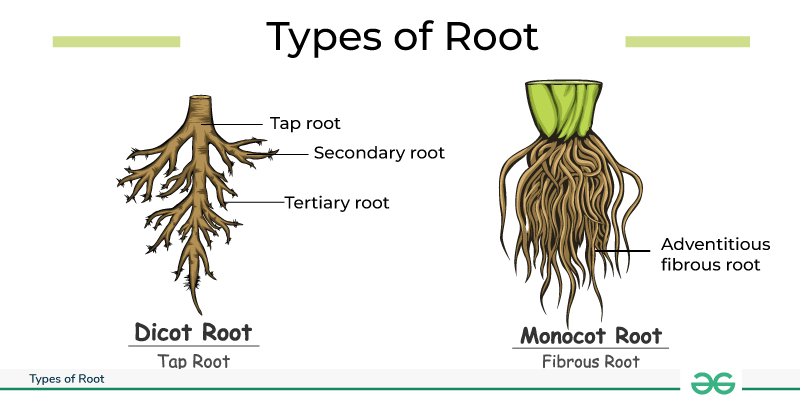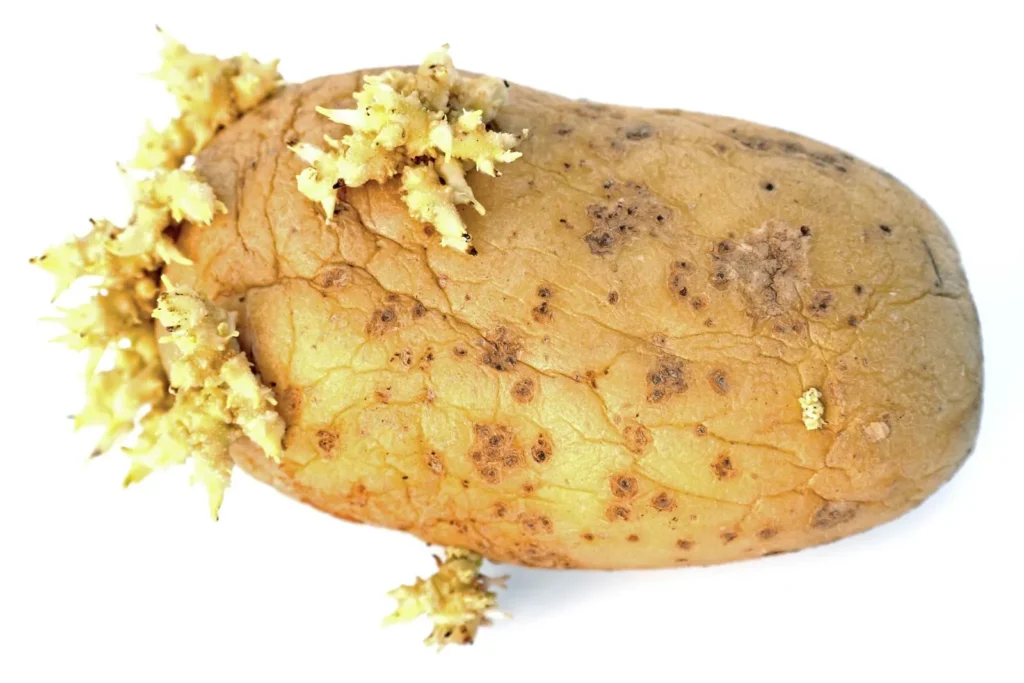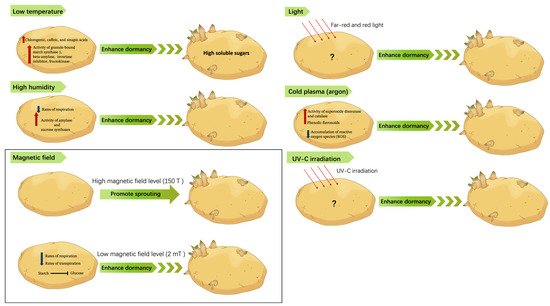Introduction Why the Confusion Exists
When people see potatoes or sweet potatoes growing underground, it’s natural to assume they are roots. After all, most underground plant parts we eat — carrots, beets, and radishes — are true roots. But the case of potatoes is special. They are not roots but modified stems called tubers. Sweet potatoes, on the other hand, are indeed roots, though of a special kind called tuberous roots.
This distinction has puzzled gardeners, students, and even health-conscious eaters. To resolve the confusion, we need to look at both botanical structure and nutritional importance.
Roots vs Stems The Botanical Basics
What is a Root

- Grows underground, anchors the plant.
- Absorbs water and minerals from soil.
- Lacks nodes and internodes.
- Cannot produce new shoots directly from its surface.
- Examples: carrots, turnips, beets, cassava.
What is a Stem

Supports leaves, flowers, and fruits.
- Has nodes (points where buds and leaves emerge) and internodes (spaces between nodes).
- Transports food from leaves to roots and water upward from roots.
- Some stems modify themselves to survive harsh seasons by storing food.
- Examples: potatoes (stem tubers), onions (bulbs), ginger (rhizomes).
Potato The Stem Tuber

Growth and Development
- Scientific name: Solanum tuberosum.
- Potatoes form at the tips of underground stolons (horizontal stems).
- As these stolons swell, they become storage organs — tubers.
Key Stem Features in Potatoes
- Eyes: Small indentations on potato skin are nodes containing buds.
- Buds: Each eye can sprout shoots or leaves, proving stem-like behavior.
- Internodes: Spaces between eyes.
- Regeneration: A cut piece with eyes can grow into a new plant.
Why Potatoes Are Stems Not Roots

The presence of nodes, internodes, and buds — absent in roots — confirms that potatoes are stem tubers.
Sweet Potato The Tuberous Root
Growth and Development
- Scientific name: Ipomoea batatas.
- Family: Morning glory (not related to potatoes).
- Sweet potatoes develop from lateral roots that thicken into storage organs.
Key Root Features in Sweet Potatoes
- No eyes or nodes: Smooth skin, no buds.
- Adventitious buds: Regeneration occurs from root tissue, not from tuber surface.
- Storage function: Roots swell with starch, vitamins, and antioxidants.
Distinction from Potato
Unlike potatoes, sweet potatoes cannot sprout from cut pieces unless connected to live roots. Their structure aligns with root classification, not stems.
Beyond Potatoes Types of Underground Storage Organs

Taproots

- Thickened primary roots.
- Examples: carrots, beets, turnips, radishes.
Tuberous Roots

- Swollen lateral roots for storage.
- Examples: sweet potato, cassava, dahlia (ornamental).
Stem Tubers

- Modified stems that store starch.
- Examples: potato, yam.
Bulbs

- Underground stems surrounded by fleshy leaf scales.
- Examples: onion, garlic, tulip, daffodil.
Corms

- Solid swollen stem bases.
- Examples: taro, crocus, gladiolus.
Rhizomes

- Horizontal underground stems with nodes.
- Examples: ginger, turmeric, iris.
Edible Buds

- Above-ground storage organs.
- Examples: broccoli (flower buds), cabbage (terminal bud).
Nutritional Insights on Root and Stem Vegetables
Potatoes
- High in starch (37 g carbs in one baked russet).
- Excellent potassium source (more than a banana).
- Provide vitamin C, some B vitamins.
Sweet Potatoes
- Lower in starch than russet potatoes.
- Rich in vitamin A (beta carotene), vitamin C, antioxidants.
- Good for eye health and immune function.
Carrots and Beets
- Carrots: high in vitamin A (beta carotene).
- Beets: provide folate and antioxidants, support heart health.
Health Considerations
- Overeating starchy root vegetables can cause blood sugar spikes.
- Preparation matters: fried or butter-loaded potatoes increase calories and reduce benefits.
- Best eaten roasted, boiled, or baked with minimal additives.
Cultivation and Gardening
Potatoes
- Grown from seed potatoes (tuber sections with eyes).
- Growth stages: sprouting → stolon growth → tuber swelling → flowering → plant dies while tubers mature.
- Can yield up to 20 tubers per plant.
Sweet Potatoes
- Grown from slips (shoot cuttings).
- Require warm climates, loose sandy soil.
- pH preference: slightly acidic (5.5–6.5).
Soil Requirements for Both
- Well-drained, loose, sandy loam soil.
- Poor in overly wet or clay-heavy soil.
Culinary Uses and Food Culture
Potatoes in Cuisine
- Staples worldwide (mashed, baked, roasted, fried).
- Can act as a substitute for grains due to starch content.
Sweet Potatoes in Cuisine
- Popular in desserts, roasted dishes, or as fries.
- Used in health-conscious diets due to lower glycemic index compared to white potatoes.
Creative Cooking Trends
- Root-to-stem cooking (using all parts of vegetables).
- Vegetable-forward cuisines elevating roots into main dishes.
- Examples: barbecued carrots with yogurt, miso-glazed turnips, roasted beets with herbs.
Educational Value Lessons from Potatoes and Sweet Potatoes
For Students
- Demonstrates how plant classification is based on structure, not just appearance.
- Potato: stem tuber with nodes.
- Sweet potato: tuberous root without nodes.
For Gardeners
- Helps in choosing soil, propagation techniques, and crop management.
- Distinguishing storage organs prevents cultivation mistakes.
For Nutritionists
- Clarifies which foods belong in starch vs. non-starch categories.
- Supports dietary planning for diabetics and weight management.
Table of Contents
Conclusion
Introduction – Popularity of root vegetables in food trends
What qualifies as root vegetables
Bulbs, corms, rhizomes, taproots, tuberous roots, tubers
Nutritional advantages
Vitamins, antioxidants, minerals
Examples (sweet potato, carrots, turnips, potatoes)
Risks and disadvantages
High starch and carbs
Risk of weight gain, blood sugar spikes
Effect of cooking methods
Guidelines for healthy consumption
Portion control
Eating variety
Creative cooking methods
Conclusion:
Potatoes and sweet potatoes grow underground but belong to very different plant categories. Potatoes are stem tubers with nodes, buds, and regenerative ability. Sweet potatoes are tuberous roots that swell with starch and vitamins but lack stem features.Both, however, have been indispensable in human diets and agriculture. They illustrate the remarkable adaptability of plants: some modifying stems, others modifying roots, all to ensure survival. For us, these adaptations translate into staple crops, cultural foods, and sources of vital nutrition.So next time you slice into a potato or a sweet potato, remember — one is a stem, the other a root, but both tell the story of how plants sustain themselves and us.
